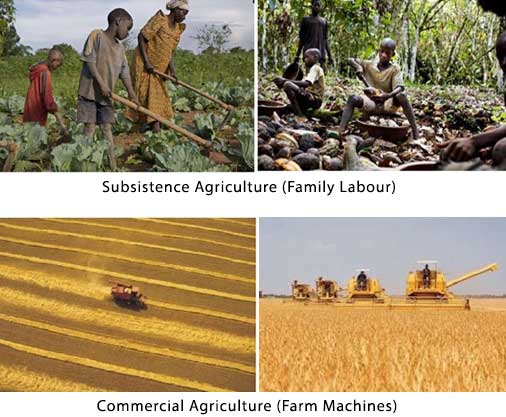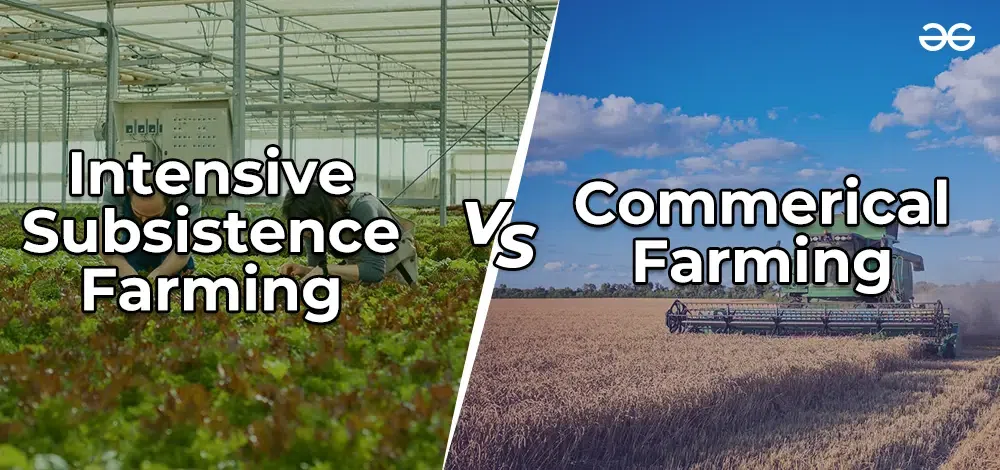A Comprehensive Guide to Commercial Farming vs Subsistence Farming Practices
Discovering the Distinctions Between Commercial Farming and Subsistence Farming Practices
The dichotomy between industrial and subsistence farming practices is marked by differing objectives, operational scales, and source application, each with extensive implications for both the environment and culture. Commercial farming, driven by profit and effectiveness, frequently utilizes advanced modern technologies that can bring about substantial environmental worries, such as dirt destruction. Alternatively, subsistence farming emphasizes self-sufficiency, leveraging conventional approaches to sustain household requirements while nurturing community bonds and social heritage. These different methods raise appealing questions regarding the equilibrium in between economic development and sustainability. Exactly how do these divergent techniques form our globe, and what future instructions might they take?
Economic Goals
Economic purposes in farming techniques commonly determine the approaches and range of operations. In commercial farming, the main economic goal is to maximize revenue.
In comparison, subsistence farming is primarily oriented towards fulfilling the instant demands of the farmer's family, with excess production being marginal. The financial goal here is usually not make money maximization, but instead self-sufficiency and risk minimization. These farmers normally operate with restricted resources and rely upon traditional farming techniques, tailored to regional environmental problems. The main objective is to ensure food security for the family, with any excess produce marketed locally to cover standard requirements. While business farming is profit-driven, subsistence farming is focused around sustainability and durability, mirroring a fundamentally different set of economic imperatives.

Range of Operations
When thinking about the range of operations,The difference between business and subsistence farming becomes specifically obvious. Industrial farming is identified by its large-scale nature, commonly including extensive tracts of land and employing advanced equipment. These procedures are generally incorporated right into global supply chains, creating vast amounts of crops or animals intended offer for sale in residential and global markets. The scale of industrial farming permits economies of range, causing reduced costs each via automation, increased performance, and the capacity to invest in technical advancements.
In stark contrast, subsistence farming is normally small, concentrating on creating just sufficient food to fulfill the prompt needs of the farmer's family or neighborhood neighborhood. The land location associated with subsistence farming is usually minimal, with much less accessibility to contemporary technology or mechanization. This smaller sized range of procedures reflects a dependence on standard farming methods, such as manual work and straightforward tools, resulting in reduced productivity. Subsistence farms focus on sustainability and self-sufficiency over earnings, with any surplus usually traded or bartered within neighborhood markets.
Source Usage
Source use in farming practices exposes significant distinctions in between commercial and subsistence approaches. Business farming, identified by massive procedures, commonly uses advanced modern technologies and mechanization to optimize the use of sources such as land, water, and fertilizers. These techniques permit helpful hints improved performance and higher performance. The emphasis is on making best use of outputs by leveraging economies of range and deploying resources purposefully to ensure regular supply and success. Precision farming is progressively embraced in business farming, utilizing data analytics and satellite technology to keep an eye on crop health and wellness and maximize resource application, additional boosting yield and resource effectiveness.
In comparison, subsistence farming operates on a much smaller sized scale, largely to meet the prompt requirements of the farmer's home. Resource utilization in subsistence farming is commonly restricted by financial constraints and a dependence on typical techniques.
Ecological Influence

On the other hand, subsistence farming, practiced on a smaller range, usually utilizes typical strategies that are extra in consistency with the surrounding environment. While subsistence farming usually has a lower environmental footprint, it is not without obstacles.
Social and Cultural Ramifications
Farming methods are deeply linked with the cultural and social textile of communities, influencing and mirroring their worths, traditions, and financial structures. check out this site In subsistence farming, the focus is on growing sufficient food to satisfy the instant demands of the farmer's household, usually fostering a strong feeling of area and shared responsibility. Such techniques are deeply rooted in regional practices, with knowledge gave with generations, consequently preserving social heritage and strengthening communal ties.
Alternatively, industrial farming is primarily driven by market demands and success, frequently leading to a shift in the direction of monocultures and large-scale operations. This technique can cause the disintegration of conventional farming techniques and cultural identities, as neighborhood personalizeds and understanding are supplanted by standard, commercial methods. Moreover, the focus on efficiency and revenue can in some cases decrease the social communication found in subsistence communities, as economic deals change community-based exchanges.
The dichotomy between these farming practices highlights the more comprehensive social implications of agricultural choices. While subsistence farming sustains cultural connection and community interdependence, commercial farming lines up with globalization and economic development, frequently at the price of standard social structures and cultural variety. commercial farming vs subsistence farming. Balancing these aspects continues to be a vital challenge for sustainable farming growth
Conclusion
The examination of commercial and subsistence farming methods reveals substantial differences in purposes, scale, source use, ecological influence, and social ramifications. Alternatively, subsistence farming highlights self-sufficiency, utilizing neighborhood sources and typical methods, consequently advertising social preservation and area communication.
The duality between business and subsistence farming methods is noted by differing objectives, functional scales, and source usage, each with extensive implications for both the atmosphere and society. While commercial farming is profit-driven, subsistence farming is focused around sustainability and resilience, showing a fundamentally various set of financial imperatives.
The distinction in between business and subsistence farming comes to be particularly obvious when considering the scale of operations. While subsistence farming supports social connection and community connection, business farming lines up with globalization visit this site right here and economic growth, often at the price of standard social structures and cultural variety.The evaluation of business and subsistence farming methods exposes considerable differences in objectives, scale, resource use, ecological effect, and social effects.